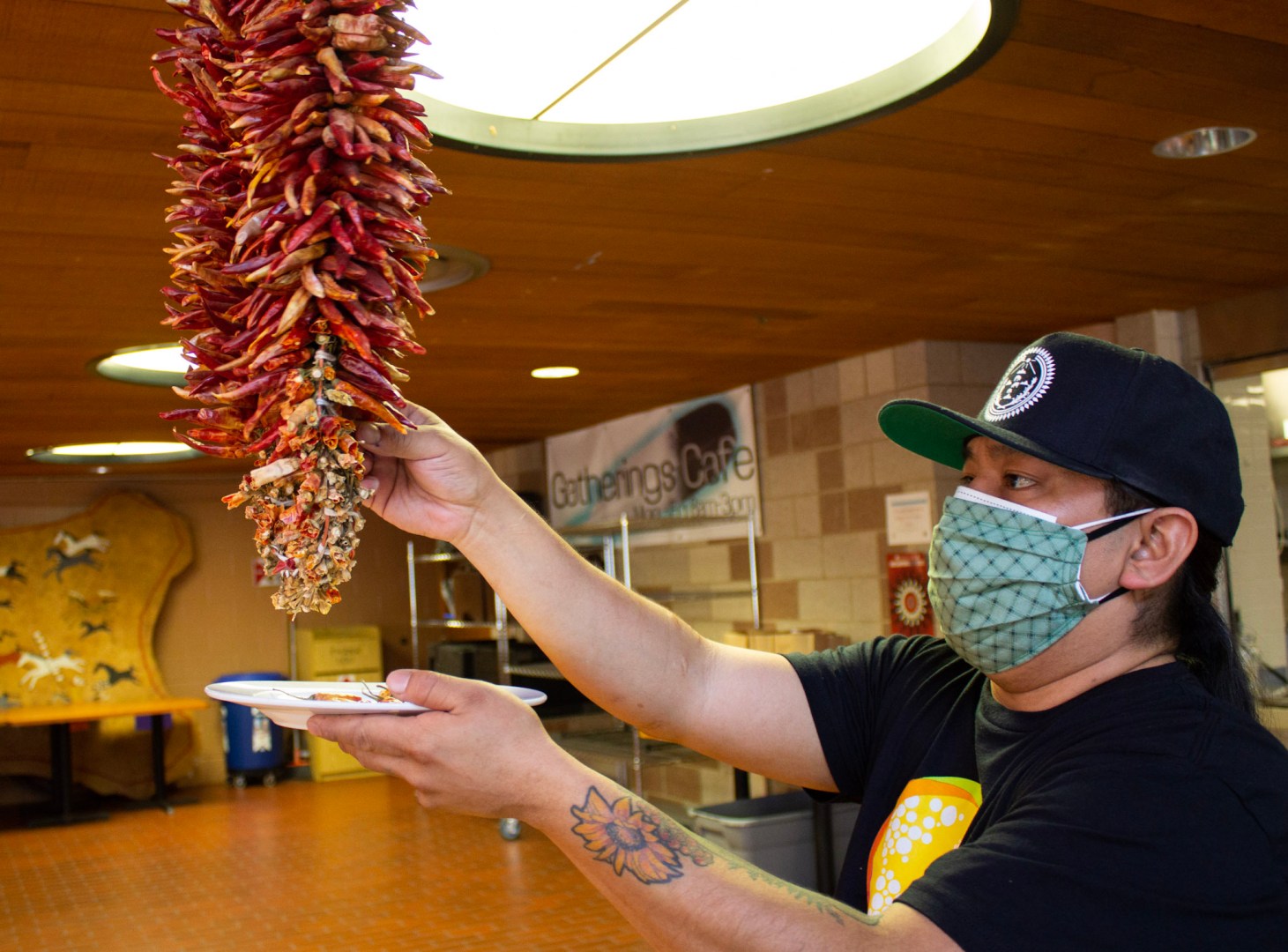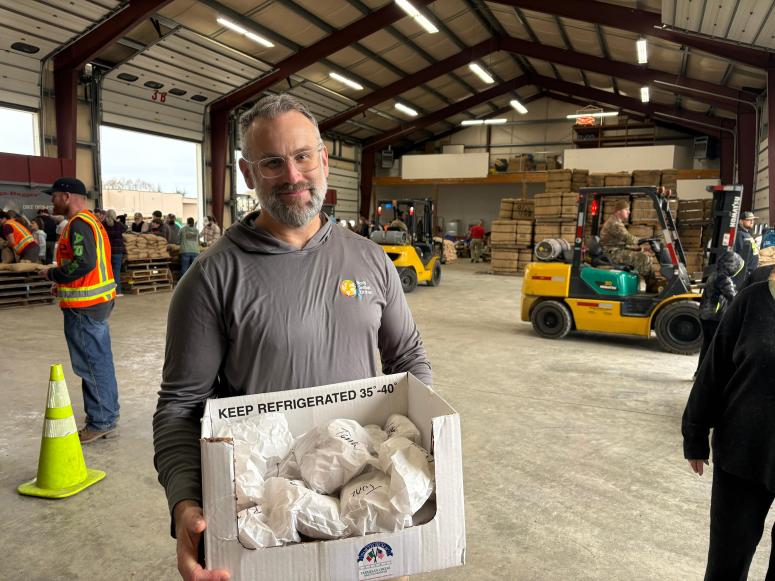The Past, Present, and Future of Food during Indigenous People’s Month

Indigenous People’s Month, observed in November, coincides with the end of the harvest season when the earth’s bounty is at its best. The timing spotlights the close link between Indigenous identity, culture, and the land. Several World Central Kitchen Chef Corps members look forward to autumn to cook with their favorite ingredients.
Crystal Wahpepah is a member of the Kickapoo nation of Oklahoma. She’s the force behind Wahpepah’s Kitchen in Oakland, California and embraces pumpkin, dried corn, and dried berries for her fall table. Around this time of year, she also concentrates on harvesting native foods and storing them for winter use.
Like many communities around the world, rice is both a staple and symbolic ingredient in Minnesota. Chef Sean Sherman is a member of the Oglala Lakota Sioux tribe and founder of North American Traditional Indigenous Food Systems (NĀTIFS) and calls the area home.
Chefs Sean and Crystal
“It’s rice season, which is probably the biggest anchor that we see,” Chef Sean says. “All this brand new, hand-harvested wild rice will be coming in from all the different native tribes and lakes across Minnesota. Being able to harvest and celebrate what’s in the native communities—especially a lot of our Anishinaabe communities in the northern part of the state— [makes it] a great, great time of year.”
Also in Minnesota, Chef Brian Yazzie of Intertribal Foodways counts down to corn. “During the fall and winter seasons, I like cooking with wild rice and corn,” he says. “The diversity of usage of each ingredient is endless: cooking, dehydrating, pureeing, milking, and nixtamalization. A creative vision with ancestral knowledge and modern techniques in a kitchen is a beautiful atmosphere of aroma and resiliency.” Blue corn is a sacred ingredient for many tribes, including Chef Yazzie’s Diné (Navajo) tribe. “It is our first and last food.”
Eating locally and sustainably is a way of life for Indigenous communities. “We challenge ourselves to make foods taste like where we might be from,” Chef Sean says. “ [We] think about the tribes in that region, the foods that sustain them for countless generations, and how we can bring that knowledge back into today’s world.”
World Central Kitchen shares the ethos of sourcing local ingredients, supporting local communities, and preparing culturally appropriate meals served with dignity. During the Covid-19 pandemic, WCK worked shoulder-to-shoulder with the Diné people, including Chef Yazzie. Together, we worked to provide food kits containing familiar ingredients like corn, beans, oats, and produce to elders who were isolating for safety.
The theme of this year’s Indigenous People’s Month is “weaving together our past, present and future.” The Department of the Interior’s Indian Affairs department says they will focus on failed policies of the past and the present work of addressing the intergenerational trauma Native people still face.
It’s the youth, according to Chef Yazzie, who shoulder the great responsibility of passing on Indigenous food traditions. “The communal love for our plant and animal relatives dates back thousands of years,” he says. ”It is up to the next generation of culinarians to carry on the knowledge and practices.”
But everyone can play a role in supporting Indigenous foodways, according to Chef Sean. The first step is to be aware of where you are. Explore the history of the land in your area, the cultures from there, and the struggles Indigenous communities face.
There are also a range of meaningful ways to support Indigenous businesses, like purchasing Indigenous food products. Chef Sean’s organization, NĀTIFS, operates an Indigenous Food Lab Market where customers can shop online for some of the fall harvest products chefs are celebrating this season, including wild rice and blue corn.
World Central Kitchen is grateful for the Indigenous chefs who serve in the Chef Corps. They’re part of our global network of prominent culinary leaders who help us get cooking quickly after crises and best serve local communities, including Indigenous tribes, with dignity and empathy.



